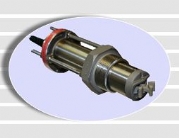mass flowmeters
Most mass flowmeters are Coriolis meters, using the fact that when a fluid is accelerated in a curve there is a reaction force at ninety degrees to the acceleration. If the resultant force or movement can be measured, the result is a mass flowmeter. This is different to all of the previously listed meters, as they have all been volumetric or velocity measurement devices, and often use an electronic package to convert velocity into volume flow, given the flowmeter dimensions. These Coriolis systems measure mass flow directly, separately measure the fluid density, and can then deduce volume flow. They are very accurate: with homogenous fluids accuracies of ±0.1% are often quoted, and calibrations that can achieve How to specify liquid flowmeters, particularly for OEM projects 6 0.01% are being discussed. The only restriction such meters commonly put to the flow is the bend in the pipe, although straight tube models are available. These meters are very expensive: but prices are falling. Some versions are very sensitive to errors induced by two-phase flow conditions, such as vapour included with the liquid. This is true for all types of flowmeter but the errors can have serious implications for mass flow meters that are designed to achieve the ultimate in accuracy. Thermal mass flow systems commonly used for controlling low gas mass flows are now being introduced for liquids. The technique uses a measure of the power required to maintain a temperature increase in the flowing liquid down a bypass capillary, usually in a side flow path routed around an orifice in the main line. It is typically used with an integral flow controller such as a valve, to maintain a fixed flow dictated by an electronic input.Visit the Titan Enterprises website for more information on mass flowmeters


